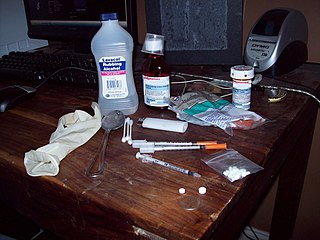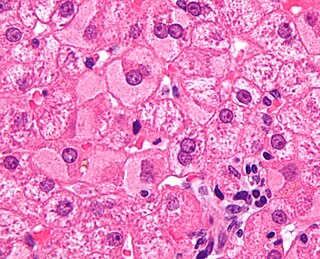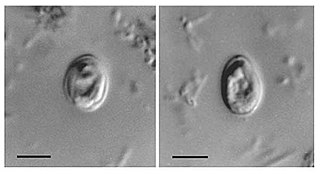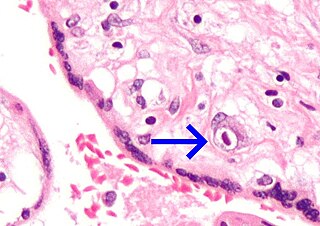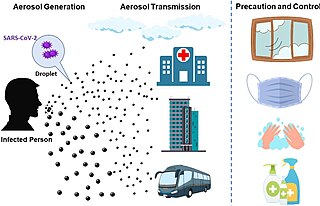Routes of transmission
The route of transmission is important to epidemiologists because patterns of contact vary between different populations and different groups of populations depending on socio-economic, cultural and other features. For example, low personal and food hygiene due to the lack of a clean water supply may result in increased transmission of diseases by the fecal-oral route, such as cholera. Differences in incidence of such diseases between different groups can also throw light on the routes of transmission of the disease. For example, if it is noted that polio is more common in cities in underdeveloped countries, without a clean water supply, than in cities with a good plumbing system, we might advance the theory that polio is spread by the fecal-oral route. Two routes are considered to be airborne: Airborne infections and droplet infections.[ citation needed ]
Airborne infection
"Airborne transmission refers to infectious agents that are spread via droplet nuclei (residue from evaporated droplets) containing infective microorganisms. These organisms can survive outside the body and remain suspended in the air for long periods of time. They infect others via the upper and lower respiratory tracts." [12] The size of the particles for airborne infections need to be < 5 μm. [13] It includes both dry and wet aerosols and thus requires usually higher levels of isolation since it can stay suspended in the air for longer periods of time. i.e., separate ventilation systems or negative pressure environments are needed to avoid general contamination. e.g., tuberculosis, chickenpox, measles.[ citation needed ]
Droplet infection
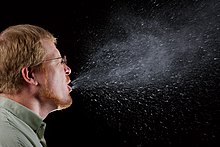
A common form of transmission is by way of respiratory droplets, generated by coughing, sneezing, or talking. Respiratory droplet transmission is the usual route for respiratory infections. Transmission can occur when respiratory droplets reach susceptible mucosal surfaces, such as in the eyes, nose or mouth. This can also happen indirectly via contact with contaminated surfaces when hands then touch the face. Before drying, respiratory droplets are large and cannot remain suspended in the air for long, and are usually dispersed over short distances. [12] The size of the particles for droplet infections are > 5 μm. [13]
Organisms spread by droplet transmission include respiratory viruses such as influenza virus, parainfluenza virus, adenoviruses, rhinovirus, respiratory syncytial virus, human metapneumovirus, Bordetella pertussis , pneumococci, streptococcus pyogenes, diphtheria, rubella, [15] and coronaviruses. [16] Spread of respiratory droplets from the wearer can be reduced through wearing of a surgical mask. [14]
Direct contact
Direct contact occurs through skin-to-skin contact, kissing, and sexual intercourse. Direct contact also refers to contact with soil or vegetation harboring infectious organisms. [17] Additionally, while fecal–oral transmission is primarily considered an indirect contact route, direct contact can also result in transmission through feces. [18] [19]
Diseases that can be transmitted by direct contact are called contagious (contagious is not the same as infectious; although all contagious diseases are infectious, not all infectious diseases are contagious). These diseases can also be transmitted by sharing a towel (where the towel is rubbed vigorously on both bodies) or items of clothing in close contact with the body (socks, for example) if they are not washed thoroughly between uses. For this reason, contagious diseases often break out in schools, where towels are shared and personal items of clothing accidentally swapped in the changing rooms.[ citation needed ]
Some diseases that are transmissible by direct contact include athlete's foot, impetigo, syphilis, warts, and conjunctivitis. [20]
Sexual
This refers to any infection that can be caught during sexual activity with another person, including vaginal or anal sex, less commonly through oral sex (see below) and rarely through manual sex (see below). Transmission is either directly between surfaces in contact during intercourse (the usual route for bacterial infections and those infections causing sores) or from secretions (semen or the fluid secreted by the excited female) which carry infectious agents that get into the partner's blood stream through tiny tears in the penis, vagina or rectum (this is a more usual route for viruses). In this second case, anal sex is considerably more hazardous since the penis opens more tears in the rectum than the vagina, as the vagina is more elastic and more accommodating.[ citation needed ]
Some infections transmissible by the sexual route include HIV/AIDS, chlamydia, genital warts, gonorrhea, hepatitis B, syphilis, herpes, and trichomoniasis.[ citation needed ]
Oral sex
Sexually transmitted infections such as HIV and hepatitis B are thought to not normally be transmitted through mouth-to-mouth contact, although it is possible to transmit some STIs between the genitals and the mouth, during oral sex. In the case of HIV, this possibility has been established. It is also responsible for the increased incidence of herpes simplex virus 1 (which is usually responsible for oral infections) in genital infections and the increased incidence of the type 2 virus (more common genitally) in oral infections.[ citation needed ]
Manual sex
While rare in regards to this sexual practice, some infections that can spread via manual sex include HPV, chlamydia, and syphilis. [21]
Oral
Infections that are transmitted primarily by oral means may be caught through direct oral contact such as kissing, or by indirect contact such as by sharing a drinking glass or a cigarette. Infections that are known to be transmissible by kissing or by other direct or indirect oral contact include all of the infections transmissible by droplet contact and (at least) all forms of herpes viruses, namely Cytomegalovirus infections herpes simplex virus (especially HSV-1) and infectious mononucleosis. [ citation needed ]
Mother-to-child transmission

This is from mother to child (more rarely father to child), often in utero, during childbirth (also referred to as perinatal infection) or during postnatal physical contact between parents and offspring. In mammals, including humans, it occurs also via breast milk (transmammary transmission). Infectious diseases that can be transmitted in this way include: HIV, hepatitis B and syphilis. Many mutualistic organisms are transmitted vertically. [22]
Iatrogenic
Transmission due to medical procedures, such as touching a wound, the use of contaminated medical equipment, or an injection or transplantation of infected material. Some diseases that can be transmitted iatrogenically include Creutzfeldt–Jakob disease, HIV, and many more. [23] [24]
Needle sharing
This is the practice of intravenous drug-users by which a needle or syringe is shared by multiple individuals to administer intravenous drugs such as heroin, steroids, and hormones. This can act as a vector for blood-borne diseases, such as Hepatitis C (HCV) and HIV. [25]
Indirect contact
Indirect contact transmission, also known as vehicle-borne transmission, involves transmission through contamination of inanimate objects. Vehicles that may indirectly transmit an infectious agent include food, water, biologic products such as blood, and fomites such as handkerchiefs, bedding, or surgical scalpels. A vehicle may passively carry a pathogen, as in the case of food or water may carrying hepatitis A virus. Alternatively, the vehicle may provide an environment in which the agent grows, multiplies, or produces toxin, such as improperly canned foods provide an environment that supports production of botulinum toxin by Clostridium botulinum . [17]
Transmission by other organisms
A vector is an organism that does not cause disease itself but that transmits infection by conveying pathogens from one host to another. [26]
Vectors may be mechanical or biological. A mechanical vector picks up an infectious agent on the outside of its body and transmits it in a passive manner. An example of a mechanical vector is a housefly, which lands on cow dung, contaminating its appendages with bacteria from the feces, and then lands on food prior to consumption. The pathogen never enters the body of the fly. In contrast, biological vectors harbor pathogens within their bodies and deliver pathogens to new hosts in an active manner, usually a bite. Biological vectors are often responsible for serious blood-borne diseases, such as malaria, viral encephalitis, Chagas disease, Lyme disease and African sleeping sickness. Biological vectors are usually, though not exclusively, arthropods, such as mosquitoes, ticks, fleas and lice. Vectors are often required in the life cycle of a pathogen. A common strategy used to control vector-borne infectious diseases is to interrupt the life cycle of a pathogen by killing the vector.[ citation needed ]
Fecal–oral

In the fecal-oral route, pathogens in fecal particles pass from one person to the mouth of another person. Although it is usually discussed as a route of transmission, it is actually a specification of the entry and exit portals of the pathogen, and can operate across several of the other routes of transmission. [17] Fecal–oral transmission is primarily considered as an indirect contact route through contaminated food or water. However, it can also operate through direct contact with feces or contaminated body parts, such as through anal sex. [18] [19] It can also operate through droplet or airborne transmission through the toilet plume from contaminated toilets. [27] [28]
Main causes of fecal–oral disease transmission include lack of adequate sanitation and poor hygiene practices - which can take various forms. Fecal oral transmission can be via foodstuffs or water that has become contaminated. This can happen when people do not adequately wash their hands after using the toilet and before preparing food or tending to patients.[ citation needed ]
The fecal-oral route of transmission can be a public health risk for people in developing countries who live in urban slums without access to adequate sanitation. Here, excreta or untreated sewage can pollute drinking water sources (groundwater or surface water). The people who drink the polluted water can become infected. Another problem in some developing countries, is open defecation which leads to disease transmission via the fecal-oral route.[ citation needed ]
Even in developed countries there are periodic system failures resulting in a sanitary sewer overflow. This is the typical mode of transmission for infectious agents such as cholera, hepatitis A, polio, Rotavirus, Salmonella , and parasites (e.g. Ascaris lumbricoides ).[ citation needed ]


